No products in the cart.
Water Resistance After Phone Repair Explained
Let’s discuss a topic that affects many of us after we’ve had our phones repaired: water resistance. It’s not something we often think about, but our devices’ ability to withstand moisture can be greatly compromised post-repair. Even when we use genuine parts, the original water resistance might not fully return. Why does this happen, and what can we do about it? Let’s explore the reality behind our phone’s protection after a repair.
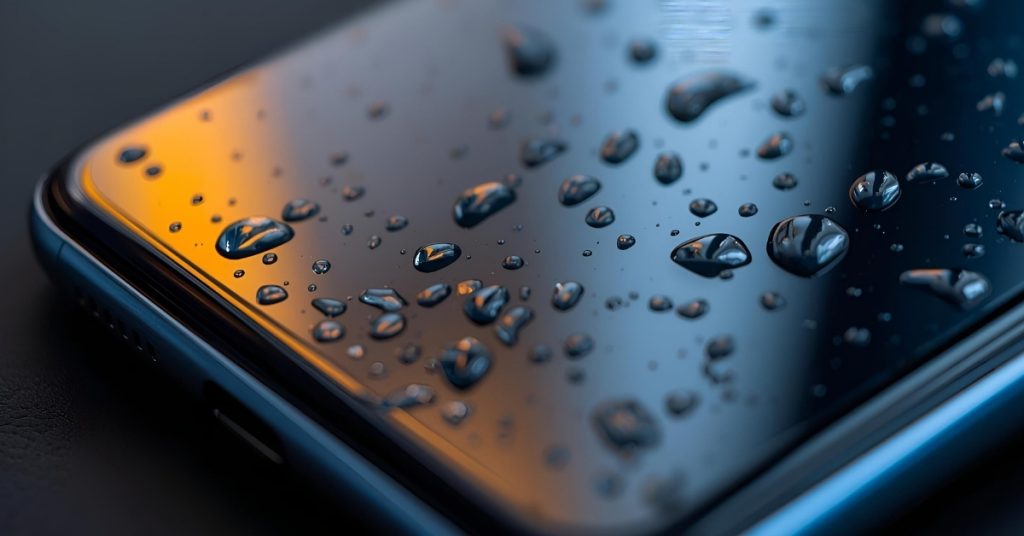

Don't Let A Broken Phone Hold You Back
Look no further! Our comprehensive price list covers all major brands and models, ensuring that you can easily find the repair cost for your specific phone. Pleas check our price list for details
What water resistance really means for repaired phones
When we talk about water resistance in repaired phones, it’s crucial to understand that the original protection level is often compromised.
Our devices might’ve had a strong water resistance rating initially, but once opened, their waterproof seals can’t be perfectly restored.
Relying on professional repairs helps, as they use genuine parts and expertise.
Still, we should be cautious with our phones around water post-repair.
Phone repair affects water resistance
When we change a screen or back glass, we can’t expect the original water resistance, like an IP68 rating, to remain intact.
The seals and adhesives that protect against moisture are often disturbed during repairs, and even skilled technicians can’t always restore them perfectly.
With this in mind, we should definitely avoid swimming with our phones after any repair to prevent potential water damage.
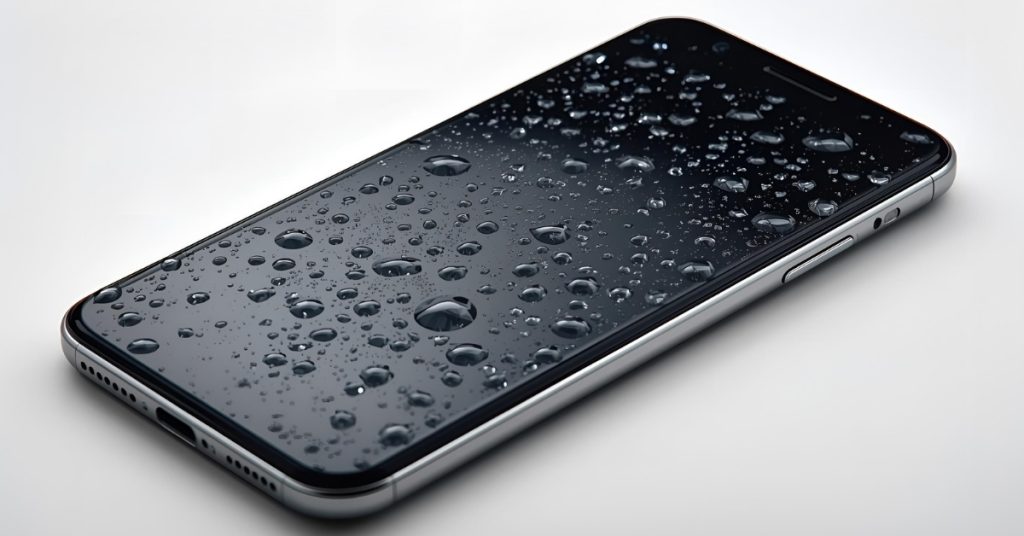
Why a screen or back glass change alters seal integrity
Even though screen and back glass replacements are often necessary, they inherently alter a phone’s seal integrity.
We recognise that maintaining water resistance capabilities is important to all of us. However, replacing these components can disturb the waterproof adhesive, potentially allowing moisture access to internal components.
This makes the quality of materials and the skill of the technician vital in preserving some level of protection.
Can I expect my original IP68 after repair
Can we truly expect our phones to maintain their original IP68 rating after a repair? Unfortunately, not always.
While professional repairs aim to preserve water resistance by using quality parts and proper waterproof adhesives, they can’t fully guarantee the original water resistance.
Seals and adhesives may be disturbed, making it wise for us to treat our phones carefully and avoid water exposure after a repair.
Should you swim with a phone after any repair
Although it’s tempting to take our phones with us everywhere, swimming with a recently repaired phone isn’t a great idea.
Water resistance over time can degrade after repairs, making the risk of a water-damaged phone high. Even with professional repairs, seals may not hold up under submersion.
To keep our devices safe, let’s avoid unnecessary risks and consider using waterproof cases for added protection.
How adhesive seals and frames reduce or restore moisture protection
Let’s consider how adhesive seals and frames play a role in restoring moisture protection after a repair. We must give adhesives sufficient cure time to guarantee a proper seal, especially when the frame is bent and prevents a perfect reseal.
It’s essential to wait before using our phone near water to avoid compromising its water resistance.
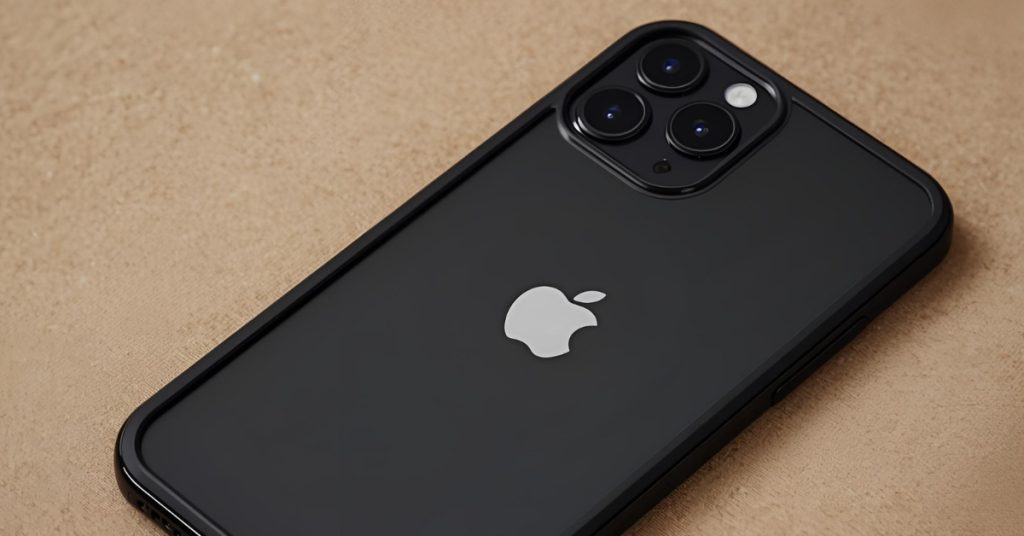
Adhesive cure time matters for resealing
When we repair a phone, particularly the Samsung A Series, the significance of adhesive cure time can’t be overstated in maintaining moisture protection.
Proper adhesive sealing is essential to restoring water resistance. If the adhesive doesn’t cure properly, gaps may form, compromising our device’s integrity.
When a bent frame stops a perfect reseal
Ensuring a proper adhesive cure time is just one piece of the puzzle in maintaining moisture protection after a phone repair.
When a bent frame disrupts alignment, adhesive seals can’t provide the necessary water resistance.
It’s understood how important it’s to feel secure about our phones, but even slight frame misalignments can jeopardise protection, allowing moisture entry where the seals fail to perfectly meet their marks.
How long should I wait before using my phone near water
After a phone repair, especially one involving the screen, it’s crucial to understand how long we should wait before using our device near water.
We should give adhesive seals at least 24 hours to cure and bond properly.
Although professional repairs can enhance water resistance, factory-level sealing isn’t fully restored.
Let’s protect our phones by limiting water exposure, ensuring they stay connected to our lives longer.

Not Sure About A Repair You Need?
Whether you’re dealing with a cracked screen, battery issues, or software glitches, we’ve got you covered. Get a FREE quote today!
Adhesive seal restores partial water barrier
When we consider the effectiveness of adhesive seals in restoring water resistance after a phone repair, it’s essential to recognise their limitations.
In situations where the phone’s frame remains intact and the adhesive is applied with precision, we can expect a reasonable level of splash protection.
However, if the frame is damaged or the adhesive isn’t aligned properly, the seal won’t hold up under pressure and could leave the device vulnerable to moisture.
Examples where a reseal is likely to perform well
Although phone repairs can jeopardise water resistance, there are scenarios where a reseal might perform well.
When our devices are repaired at an Apple store or by skilled technicians, using high-quality adhesive seals and waterproof adhesive can effectively restore partial water resistance.
This guarantees our phones withstand minor splashes, creating a sense of security and belonging in our tech-savvy community.
Cases where a reseal will not hold pressure
Despite our best efforts to restore water resistance post-repair, not all reseals will hold up under pressure.
Here’s why:
- Material quality: Using lower quality adhesives can lead to compromised seals.
- Reassembly errors: Misalignments or gaps allow moisture in.
- Device condition: Older devices may struggle to maintain a seal.
- Repair quality: Professional repairs using genuine parts offer better protection against water damage than DIY attempts.
Safe ways to check water resistance without immersion in Sunshine Coast
Let’s explore safe ways to assess your phone’s water resistance without submerging it.
At our Sunshine Coast locations, we can perform basic pressure and visual checks to guarantee your device’s seals are intact.
If you suspect moisture, using rice or silica can help absorb it, but it’s essential to address any underlying seal issues promptly.
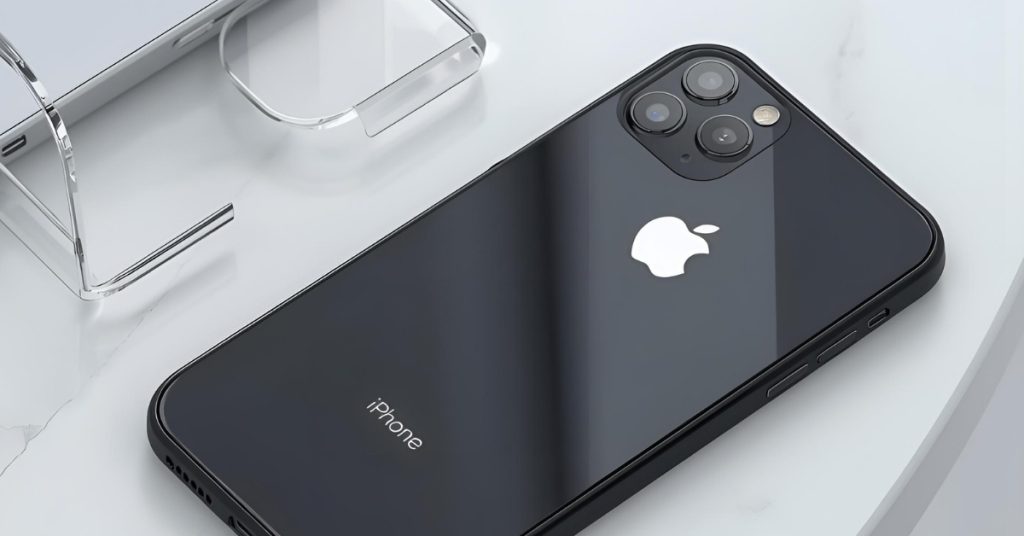
Basic pressure and visual checks you can request at our stores
When it comes to guaranteeing your Samsung A Series phone remains as water-resistant as possible after repairs, there are important checks you can request at our stores on the Sunshine Coast.
We care about your device’s safety and offer the following:
- Visual inspection of seals and gaskets.
- Pressure test to identify leaks.
- Vacuum test for air leaks.
- Professional adhesive assessment to guarantee water resistance.
Can I use rice or silica when moisture is suspected
How can we safely check for moisture in our Samsung A Series phones without risking further damage?
Let’s lean on community-tested methods. Placing our device in a container with silica gel for 24-48 hours can help absorb moisture.
While rice is popular, it’s less effective.
Inspect ports for moisture before powering on.
For peace of mind, we should consider seeking professional advice if damage is suspected.
When not to test water resistance at home
Let’s not risk testing our phone’s water resistance at home, especially after a repair.
Avoid placing it in bowls, pools, showers, or at the beach, as these tests can lead to costly damage.
If a liquid detected alert appears, we should immediately power off the device and consult a professional for advice.
Avoid bowls pools showers and beach tests
While it might be tempting to test your phone’s water resistance at home, doing so in environments like bowls, pools, showers, or at the beach is risky.
Here’s why:
- Water resistance can degrade after repairs, reducing ingress protection.
- Prolonged submersion risks water-damaged phones.
- IP68 rating isn’t a safety guarantee post-repair.
- Liquid damage isn’t covered by warranties.
Let’s keep our devices safe together!
What to do if the liquid detected alert appears
If a liquid detected alert pops up on our devices, it’s essential not to panic but to act wisely.
Let’s keep the phone off and dry without heat. Testing water resistance at home isn’t advised—this could worsen water damage.
Instead, seeking professional assistance guarantees experts assess and tackle issues.
Document everything for potential warranty claims, guaranteeing we belong to a community that values smart tech care.
Urgent steps if your phone gets wet after any repair in Chermside
If our phone gets wet after a repair in Chermside, we need to act quickly to minimise damage.
First, let’s power it down immediately and remove any protective case to prevent further issues.
Then, booking a water damage assessment with a professional should be our next step to guarantee the device is thoroughly checked and repaired.
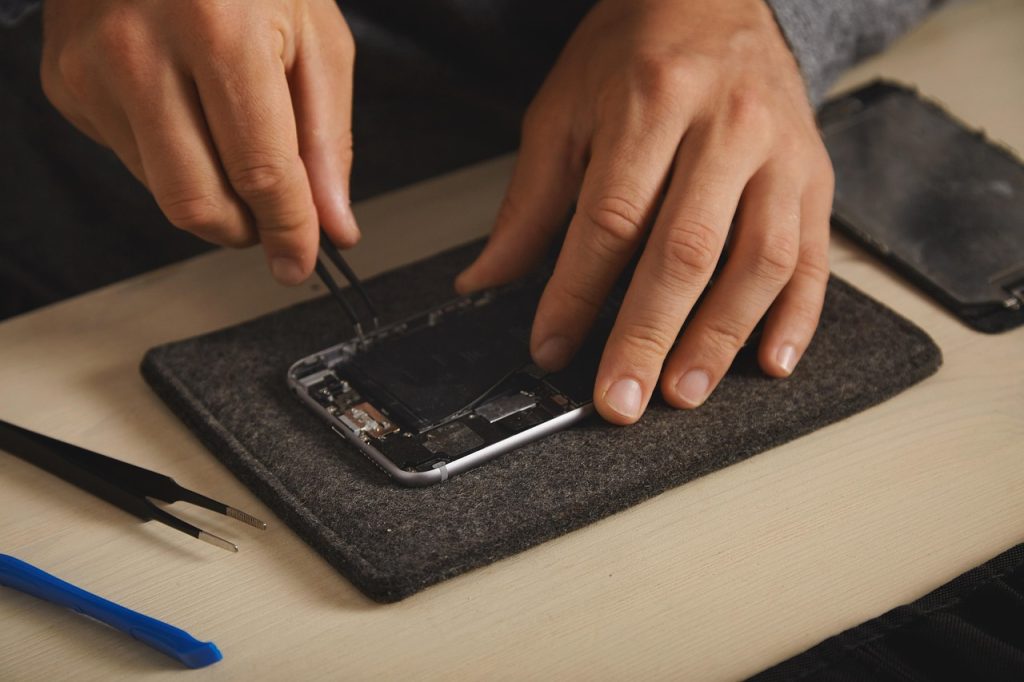
Power down remove case and book water damage assessment
Even though your phone just went through a repair, accidents happen, and it might still get wet.
Let’s handle it together:
- Power down the phone immediately to avoid short circuits.
- Remove case or cover to help with drying.
- Check for signs of moisture under the screen or in ports.
- Book a water damage assessment promptly to increase recovery chances.
We’re in this together—act quickly!
Brand realities for iPhone and Samsung on the Sunshine Coast
As we explore the realities of iPhone and Samsung repairs on the Sunshine Coast, it’s essential for iPhone users to understand that liquid alerts can signal compromised seals post-repair, affecting water resistance.
Samsung users should be aware that after repairs, the IP ratings—especially for A Series models—might not reflect the original factory standards.
Together, let’s consider how these factors influence our decisions on water exposure after repairs.
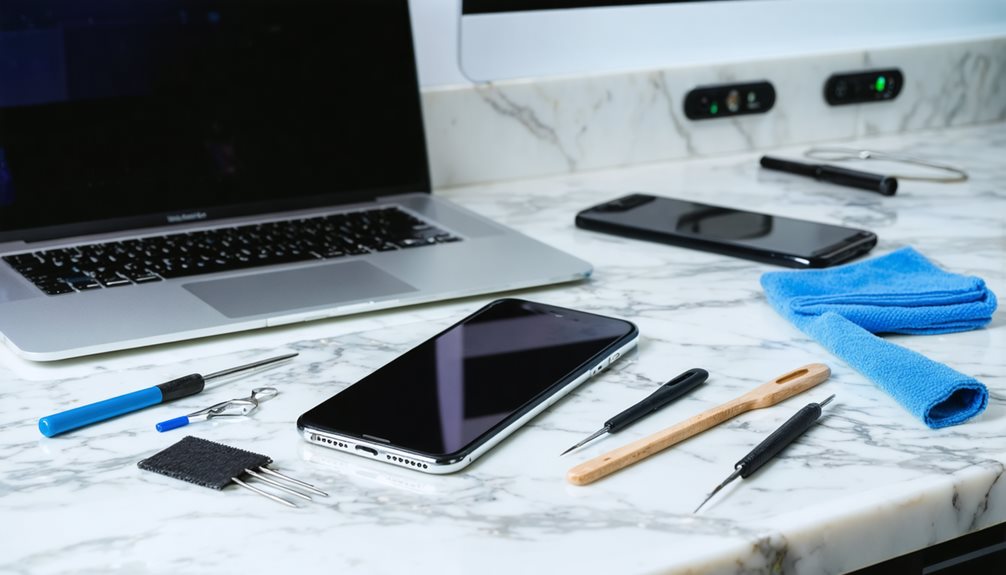
What Apple users should know about liquid alerts and seals
Understanding liquid alerts and seals is essential for Apple users, especially those living on the Sunshine Coast where humidity and moisture are prevalent.
Our iPhones are designed as waterproof devices with IP68 ratings, yet post-repair, water resistance might diminish.
To avoid liquid damage, let’s remember:
- Screen integrity matters.
- Confirm quality repairs.
- Warranty excludes liquid damage.
- Stay cautious around water.
Together, we can protect our devices.
What Samsung users should know about IP ratings after repair
When it comes to Samsung’s IP ratings, especially after a repair, there’s a lot we need to know to keep our devices safe.
Our Samsung A Series phones may not be true waterproof phones, often relying on splash resistance and not an IP67 rating.
After professional repairs, maintaining water resistance is challenging, so let’s handle our devices cautiously to avoid water exposure and potential damage.
From understanding risk to booking the right service
When we’re ready to address the water resistance of our repaired phones, it’s essential to understand the service options available.
We should first compare pricing to decide if we prefer dropping off our device, sending it in, or opting for a pickup and return service.
Get pricing then choose drop in send in or pickup and return
Choosing the right phone repair service can make a world of difference when it comes to preserving your device’s water resistance.
Let’s explore how to decide:
- Research repair shops: Find ones offering a water resistance warranty.
- Evaluate professional repairs: Guarantee they use genuine parts.
- Compare pricing: Consider drop-in, send-in, or pick-up and return services.
- Read reviews: Verify technicians’ expertise in maintaining water resistance.
Proof you can rely on parts quality and workmanship
When it comes to preserving our phone’s water resistance after a repair, the quality of parts used is vital.
Genuine seals and gaskets guarantee the integrity of the device, whilst a frame or housing replacement might be the best option for long-term protection.

What parts are used and why that matters for seals and gaskets
Understanding the importance of using quality parts during phone repair is essential for maintaining seals and gaskets.
By opting for a genuine replacement, we guarantee:
- Compatibility with original specifications.
- Use of waterproof adhesives for effective sealing.
- Preservation of water resistance standards.
- Proper alignment and installation of components.
Choosing quality helps us belong to a community that values the longevity of our devices.
When a frame or housing replacement is the safer long term choice
Opting for a frame or housing replacement can be a wise long-term decision, especially when structural integrity and water resistance are at stake.
By choosing frame replacement with genuine parts, we guarantee the seals align perfectly, restoring the device’s water resistance.
Relying on skilled technicians not only boosts our phone’s durability but also assures us that we belong to a community that values quality and care.
Final Thoughts
In summary, let’s remember that while phone repairs can impact water resistance, taking proactive steps can help maintain protection. By understanding the limitations of post-repair water resistance, opting for high-quality parts and workmanship, and using waterproof cases, we can safeguard our devices. Regularly checking seals and avoiding submersion are vital. Ultimately, it’s about making informed choices to guarantee our phones stay functional and safe. We’re here to guide you through every step of the process.
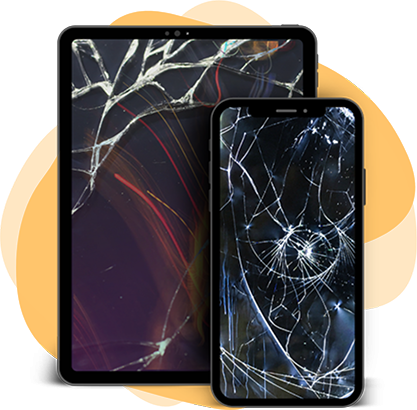
Book Online &
Save $10 on Your Mobile Phone Repair
By booking online, you get an exclusive $10 discount on your repair cost. Don’t miss out on this special offer!
Frequently asked questions about post repair water resistance
Ever wonder if it’s safe to snap photos in the rain after getting your phone’s screen replaced? Let’s explore:
- Water resistance may be compromised after a screen replacement.
- Liquid damage isn’t covered by warranty, so it’s risky.
- IP68 ratings don’t guarantee protection post-repair.
- Consider a waterproof case to protect against potential damage.
We belong to a community that values our devices – let’s keep them safe!
When considering a beach day with a recently repaired phone, especially after a screen replacement, using a waterproof pouch is a smart precaution.
We’re all in this together, wanting to keep our phones safe from liquid damage. Since water resistance may be compromised post-repair, a waterproof pouch offers that extra layer of security, shielding against sand, water, and accidental drops.
Let’s protect our devices and prevent costly repairs!
How long can we expect adhesive seals to last in daily use after a phone repair? Adhesive seals can degrade over time, affecting water resistance, especially when exposed to water or daily activities.
Here’s what we should keep in mind:
- Heat and moisture accelerate degradation.
- Quality of materials matters; genuine parts last longer.
- Regular inspections help spot wear early.
- Limit water exposure whenever possible.
Water resistant means that the smartphone is designed to withstand some exposure to water without sustaining damage. For example, the iPhone 12 has a rating of IP68, meaning it can resist water at a depth of up to 6 meters for 30 minutes. However, this does not guarantee it will still be waterproof after any repair work.
After a screen replacement, the water resistance of your iPhone 7 may be compromised. Even if the repair is done using genuine Apple parts, the seals that maintain the device’s water resistance could be disrupted, making it more vulnerable to water damage.
The iPhone 13 is rated IP68, which means it can handle being submerged in water up to 6 meters for 30 minutes. However, if the device has undergone repairs, especially involving the charging port or screen, it may no longer meet this standard.
If your smartphone comes into contact with water, it can cause short circuits within the device, potentially leading to permanent damage. It’s crucial to act quickly by powering off the device and removing the SIM card to minimize the risk of water damage.
To protect your iPhone from excess water after a repair, consider investing in a waterproof case or placing your phone in a bag with silica gel packs. These measures can help absorb moisture and provide an extra layer of protection against potential water damage.
Apple’s warranty doesn’t cover liquid damage, meaning if your phone sustains water damage, you may have to pay for repairs out of pocket. It’s important to ensure that your device is properly sealed and protected after any repairs to avoid such issues.
Indicators that change, such as water damage stickers or corrosion around the charging port, can suggest that your smartphone is vulnerable to water damage. If you notice these signs, it’s advisable to have the device inspected by a professional.
Yes, the iPhone X has a rating that is dust-tight as well as water resistant. This means that it can resist not only water but also dust particles, which can help keep your device functioning optimally under various conditions.
If your phone screen is cracked and has been exposed to water, immediately turn off the device and dry it gently. Avoid charging it until you can assess the damage. A cracked screen can allow water to get inside the device, leading to severe internal damage.
The iPhone 15 is designed to be waterproof with a rating of IP68. However, if any repair work is done, especially to the screen or internal components, there’s a chance it may not retain this waterproof capability. Always use genuine Apple parts for repairs to maintain the best possible water resistance.





